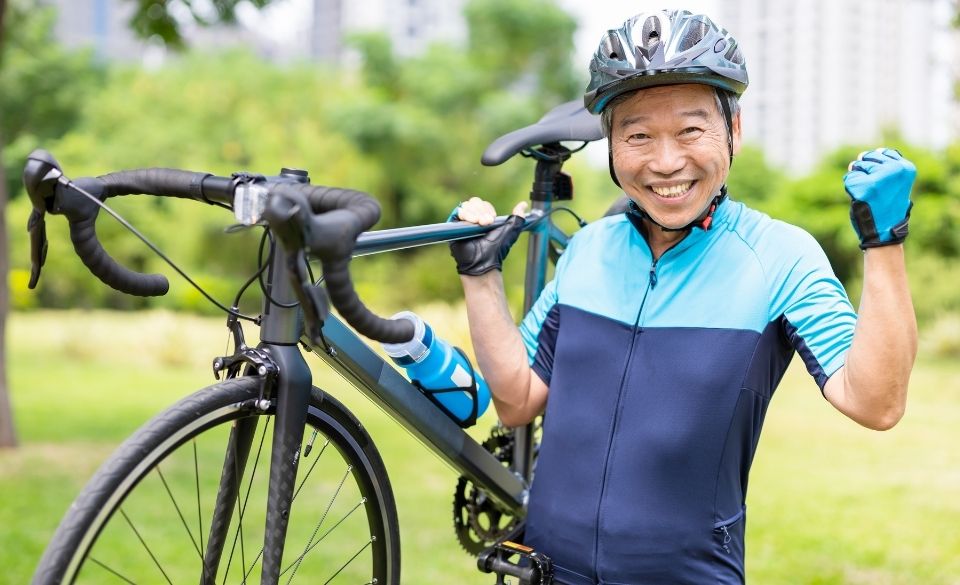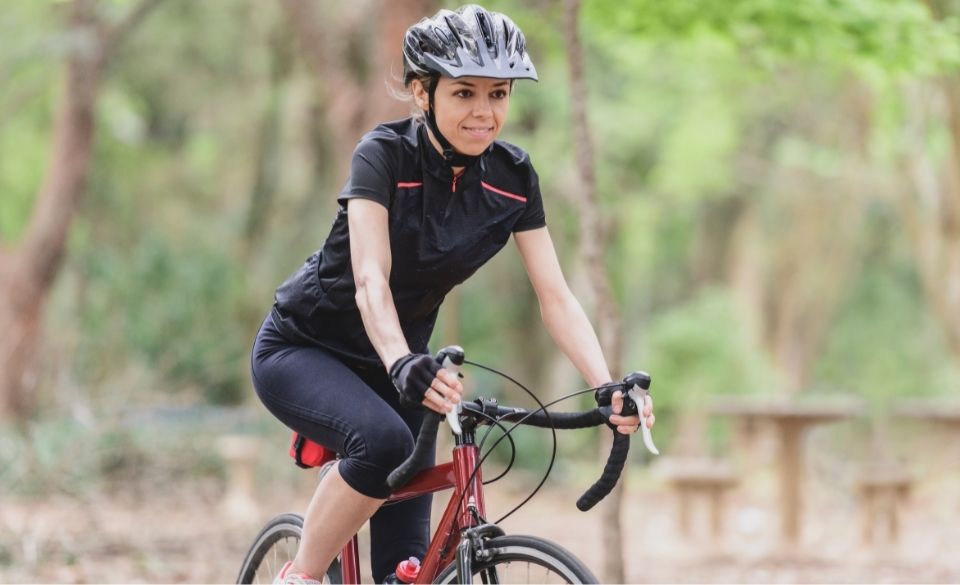
Cycling For Beginners – Tips, Training & More!
From the outside looking in, cycling looks like a simple sport. However, it is much more complicated than just turning the pedals.
Getting started cycling as a beginner, takes considerable investment. For one, you need to purchase a bike, then comes the clothing, shoes, and nutrition. After that, learning to handle the bike correctly in a group and even when descending becomes very important, and Learning to ride in a group and descending at speed can take years of practice.
Once you have purchased your new bike, clothing, shoes, and other things, then mastered the art of bike handling, you will need to start looking at your training.
However, cycling for beginners doesn’t need to be complicated. That’s why we have compiled a few tips to help you on your journey.
Cycling For Beginners – What Should You Know?
As a beginner starting cycling, there are a few factors your need to consider before hitting the roads.
First, you need to purchase your first bike, which can be a daunting experience. Regardless of the model you choose, you should be fitted correctly on the bike to prevent any discomfort while riding. Your position on the bike should be adjusted after purchasing any cycling clothing and shoes, as the shoes play an important part in saddle height, foot position, and more. A good quality bike can be costly, but this ensures your safety because a cheaper bike may not be as sturdy and might cause injuries and accidents more easily than high-quality ones. So, when buying, expect this, and don’t try to think much about the savings, you’ll have when you get a cheaper one.
The bikefit may include changing the length of the stem, adjusting the handlebar height, setting the fore-aft saddle position, or even changing the saddle for a different model.
In general, a bike fit should take around 2 hours. The bikefit will take into account your flexibility, mobility, experienced, and any injuries you may have sustained through other forms of exercise like running.
Once you have been set up on the bike correctly, you can start thinking about how much and how often you should ride.
When it comes to starting cycling, it is important to start slowly. That means you should increase the duration of your rides by a small amount each week.
And please don’t forget to do stretching exercises before you ride your bike. Stretching will help your muscles acclimate to the activity and will prevent you from shortening and tightening them. It’ll also lower the risk of joint pain, muscle strain, and muscle damage. If your muscles become tight after riding, you may experience muscle weakness and, in some cases, you won’t be able to extend your leg muscles or straighten your knee all the way. So, take the time to do stretching activities, and your body will thank you for it.
While it is easy to get excited and head out on the bike every day, it is important to hold back during the first few months. This will allow the body to adapt to riding a bike and prevent overloading of the muscles.
Most beginners experience some form of injury during the first few months. This is usually caused by a rapid increase in training, which puts excess stress on muscles that haven’t been put underload before.
Instead, start by riding your bike 3-4 times a week. This will allow adequate recovery between each ride. However, keep the duration short (30 minutes) and then slowly build up over the next few months. A simple way is to follow the 10% rule. That means increasing your weekly riding by no more than 10% each week.
During this time, focus on building your endurance through slow rides. Start by riding on the flat and building up your fitness before heading into the hills. Doing so can also help you to get used to the handling of the bike. It will also allow your body to adjust to sitting in a fixed area for a period of time.
Once you have reached 60 minutes of riding on the flat without any discomfort on the bike, you can then start to look at implementing some intensity to build your fitness.
The easiest way for beginners is to head into the hills. Cycling up a hill, even at a slow speed, can help build muscular power, and cardiovascular fitness and improve your V02. It will also help you feel more confident on the bike while the body is under stress. It may also help you to learn how to descend properly. Just remember to take the descents slow and safe before you start increasing the speed you go downhill.
Once you have started to cycle over hilly terrain more often, and the body is used to sitting on a bike for hours, you can start thinking about how you should train.
Training will vary depending on your goals, so it is recommended that you should speak to a cycling coach that can help drive you in the right direction based on these goals. Alternatively, join a cycling club or talk to a friend who cycles. They can all provide valuable tips for your training.

Tips For Beginner Cyclists
If you’re starting cycling as a beginner, there are some tips you should follow. So, here are our 9 best tips for beginner cyclists:
1. Protect your head
More than 60 percent of deaths (on a bicycle) are caused by head injuries. Many of these deaths may have been avoided if a helmet was being worn. While some countries in the world don’t require you to wear a helmet, many studies have shown that they will protect your head during an accident. So have your local bike shop measure you up and find the perfect helmet. Buying a helmet can be tricky, and if you’re also into skateboarding, you can use your skateboard helmet when you ride your bike as long as it’s CPSC certified. CPSC means Consumer Product Safety Commission. You need to know what a helmet can do before using it in cycling. It’s great that high-quality skateboard helmets from trusted and reliable brands are backed by MIPS technology. MIPS is multi-directional impact protection system. It’s sophisticated technology that protects your head from a life-threatening head injury
2. Start off using light gears
As a beginner, it is easy to push high gear at slow speeds. This is usually because the beginner lacks the cardiovascular fitness needed to pedal at a higher cadence for extended periods. Instead, try to spend segments of your riding focusing on a cadence above 80 rpm. Then slowly increase the duration of these segments throughout your ride.
3. Learn to use your gears.
When riding a bike for the first time, it can be confusing with the number of gears you have. Instead, go to an empty parking load or quiet road and practice shifting through your gears and get an understanding of what each gear feels like.
4. Get a proper bike fit
A good bike fit can make and break how comfortable you feel on a bike. It can also prevent injuries and numbness in the body. Make sure you book an appointment with a qualified bike fitter with years of experience and plenty of positive reviews.
5. Purchase the correct saddle
Purchasing the correct width, shape, and design of a saddle is one of the most important purchases when starting out. Don’t go for the most padded saddle or most expensive one. Instead, get fitted up correctly and trial a few different types of saddles.
6. Change your position often
Move your hands and stand up regularly throughout your ride. This will prevent your hands, bum, and other parts of the body from getting numb from sitting in a fixed position. It will also prevent any stiffness in the neck and back, as well as increase blood flow to these areas.
7. Don’t use headphones
Cycling with headphones can be dangerous. You need to be able to hear cars from behind, and other people in the group if you are cycling in a pack. So, leave your headphones at home.
8. Know the road rules
Just like driving, you are required to obey all road signs. That means don’t skip through red lights and cycle on the side of the road.
9. Look forward when riding
Make sure you keep your head upright when cycling. Failure to do so can prevent you from seeing parked cars or debris along the road.
Hopefully, some of these tips will make your experience on a bike more enjoyable.



